Kraków 2014-11-10
Balice Airport.
Geographic coordinates: 50.078N 19.786E. Elevation 241 m.
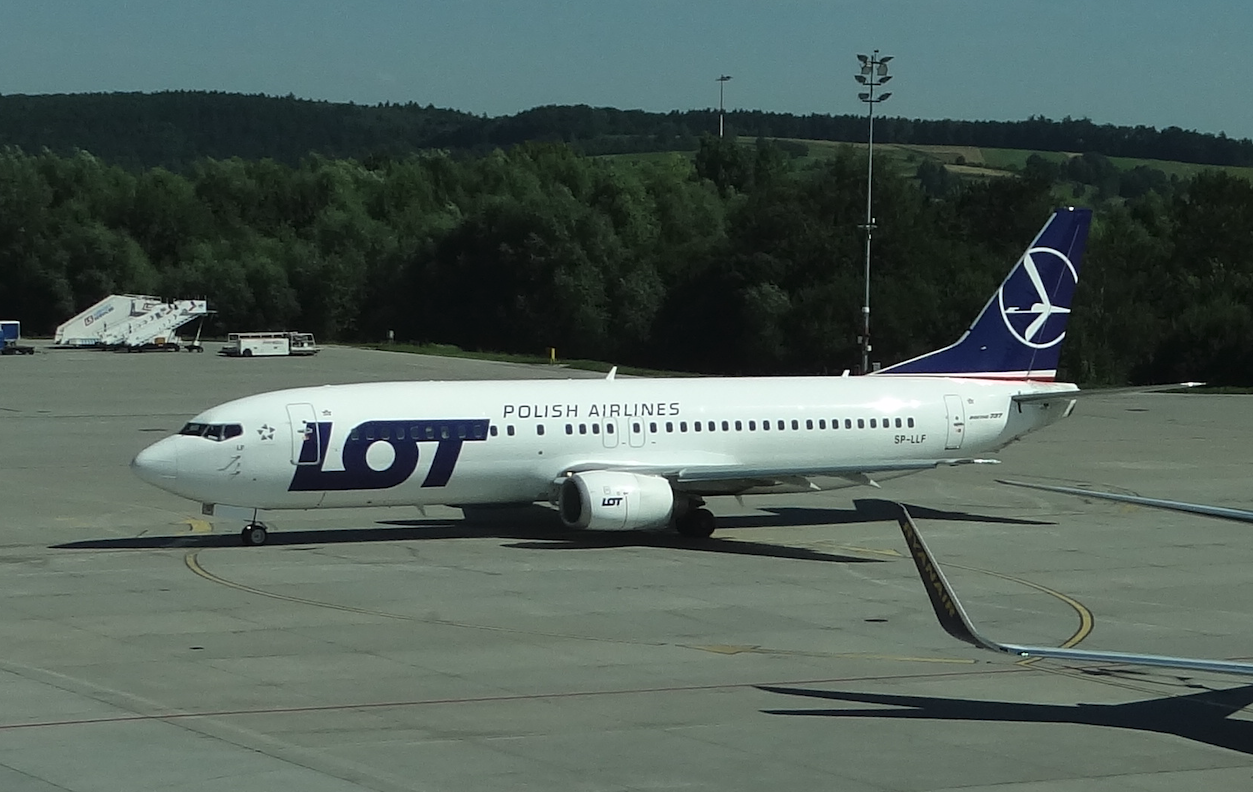
Photo description: Boeing B.737 SP-LLF is the fifteenth B.737 aircraft in LOT Polish Airlines. The aircraft was delivered in June 1997, and was the third new aircraft of this type in the fleet. Boeing B.737-400, SP-LLF, MSN 28752 No. 2874. The aircraft was made as part of a 737-45D. The plane was delivered at the beginning of June 1997, just before the visit of the Holy Father John Paul II to the Republic of Poland, and it was with this machine that Saint John Paul II the Great returned to Rome from Balice Airport. In February 2005, the aircraft was transferred to Centralwings. From June 1, 2009, the plane was operated by the Polish company LOT Charters. Then he returned to LOT Polish Airlines. In January 2020, three remaining B.737-400 aircraft, registrations SP-LLE, SP-LLF, SP-LLG; withdrawn from passenger transport and adapted to cargo transport.
Kraków Airport named after Saint John Paul II the Great is the second largest in the Republic of Poland after Okęcie. In 2014, it served 3,818,000 passengers. 17 carriers fly from it (6 low-cost, 11 traditional).
New railway line to Balice Airport.
During the construction of the Balice Airport in the 1950s, a railway line was built to constitute a supply route. The siding was built as a single-track, non-electrified one. Its beginning is the Kraków Mydlniki railway station, which is located on the important Kraków-Katowice railway route. The siding led not only to the Airport, but also to Olszanica, where a large fuel base was built. Most goods, especially fuel, were and are still delivered by train.
In 2004, the proposal of a passenger rail connection between the Airport and the center of Krakow was once again revived, using the existing railway siding. This time, however, the idea was implemented. From May 26, 2006, railbuses ran on the route Kraków Główny Railway Station - Balice Airport through Mydlniki. The bus ride from the city center took 15-16 minutes. The train was called Ekspres Balice. In 2009, the train ran every day, almost 24 hours a day, except for late night hours, every 30 minutes. The price of a normal single-trip ticket was PLN 7. You could also buy a ticket from a machine on the train, which accepted banknotes and gave you change. The train did not stop at intermediate stations. Only some trains stopped at the Kraków-Łobzów stop.
The line was served by trains: two diesel railbuses (SA133-004 and SA133-005), in reserve SA101-001+SA121-001 and SA109-002. Air-conditioned trains, number of seats: 140-146, total number of seats: 300.
More information and a photo report can be found in one of the previous chapters.
However, in 2009, the railway line needed modernization. Firstly, unguarded railway crossings had to be eliminated and replaced with viaducts or at least crossings with barriers. The Balice railway stop also had to be moved much closer to the terminal. There was also talk of possible electrification of the section from Mydlniki to the military base. Talks have started at various levels of state and local government administration. Councilors of districts located along the railway route joined the discussion. The issue of building new railway stops arose almost immediately, so that residents of the peripheral districts of Krakow could also use the railway line. Things were taking a positive turn and specific decisions were being made.
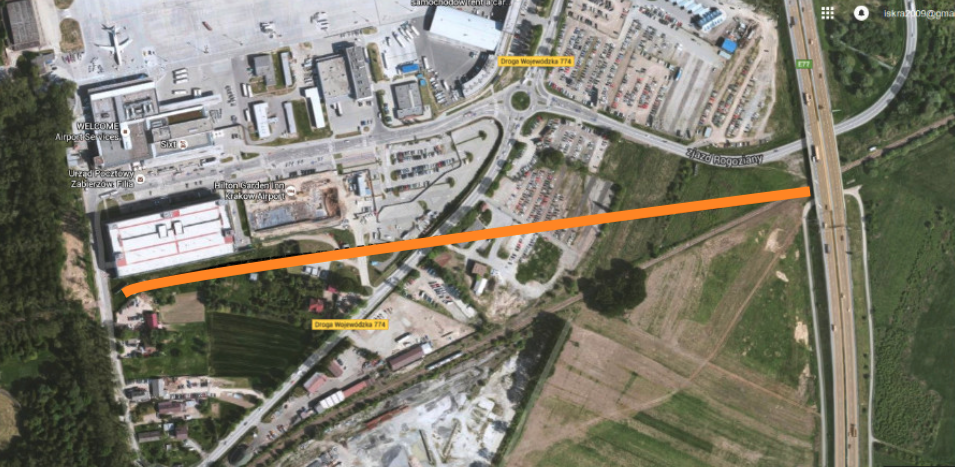
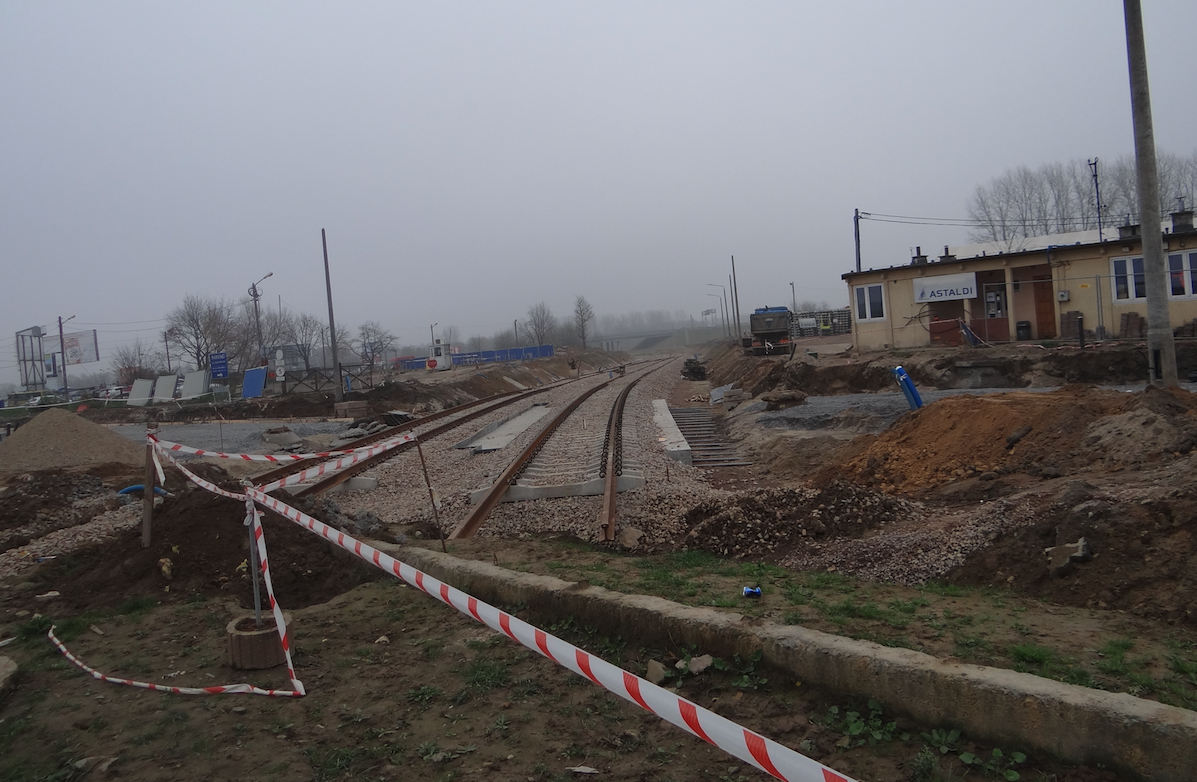
Photo description: The photo shows railway tracks near provincial road No. 774.
It was decided to build a new railway line on the Mydlniki-Airport route. The line is double-track, electrified. New railway stops were built along the route.
Koleje Małopolskie.
On December 2, 2013, the Koleje Małopolskie company was established by resolution No. XLIV/705/13. The founding body was the Self-Government of the Lesser Poland Voivodeship. For the carrier's needs, the Marshal's Office of the Małopolskie Voivodeship purchased three PESA Acatus Plus EZT EN-64 trains, which were leased by Koleje Małopolskie. PESA is a Polish manufacturer of excellent trams and trains, based in Bydgoszcz.
EMU stands for Electric Multiple Unit. Electric trains in Poland were developed already in the second half of the 30th century, which should not be surprising, because electric trams have been running in Lviv since 1894. Earlier than in Vienna. After World War II, the development of electric locomotives was resumed in Poland only at the end of the 50s. Their serial production started in 1960. In 1961, the production of the first passenger electric set began, marked EN-57 (max speed 110 km/h), called "yellow" by travelers due to its standard painting; yellow-blue. These trains were produced by the Pafawag Wrocław plant until 1997, when the plant was closed down. For several years, trains were not produced in Poland.
Around 2005, two Polish plants began producing EMU trains; PESA in Bydgoszcz and NEWAG in Nowy Sącz. They produce suburban and long-distance trains. Three-, four- or more wagons that can move at speeds of 220 km/h and more. Therefore, it was surprising that the Masonic-liberal Government of Prime Minister Donald Tusk purchased Italian Pendolino trains, which only run at a speed of 200 km/h on some sections of the modernized railway tracks. All for a huge amount, for which Polish plants would build three times as many such trains.

A modern EMU EN-64-007 train no. 2130313-1 manufactured by PESA, belonging to Koleje Małopolskie, running to Balice Airport, standing at the Kraków Płaszów station.
PESA EMU trains can consist of three to six wagons. Those purchased for Koleje Małopolskie are three-unit. They are equipped depending on the customer's needs. It is the user who determines the number of toilets (standard toilet for disabled people), the arrangement of seats, and even the color of the upholstery and the logo of the transport company, just like in the case of airplanes. The standard traveling speed of the EMU EN-64 train is 160 km/h. The train is air-conditioned, equipped with a toilet, bicycle racks, electrical sockets, WiFi access, ticket machines and 138 seats in three carriages. The trains have excellent suspension and it is quiet inside and the interior is very luxurious.
On November 6, 2014, the first PESA EMU service took place on the Kraków Główny-Wieliczka Rynek route. From December 14, 2014, trains ran regularly. On March 1, 2015, the company received another 4 trains, and on September 1, 2015, another two EMUs. By the end of 2015, Koleje Małopolskie had 10 trains and planned, in addition to the Kraków-Wieliczka and Kraków-Balice routes, to launch routes to Miechów/Sędziszów and Tarnów. The company also sought to take over the regional branch of Przewozy Regionalne in Małopolska. Tickets can be purchased from vending machines at some railway stations, from vending machines on the train or from the conductor on the train.
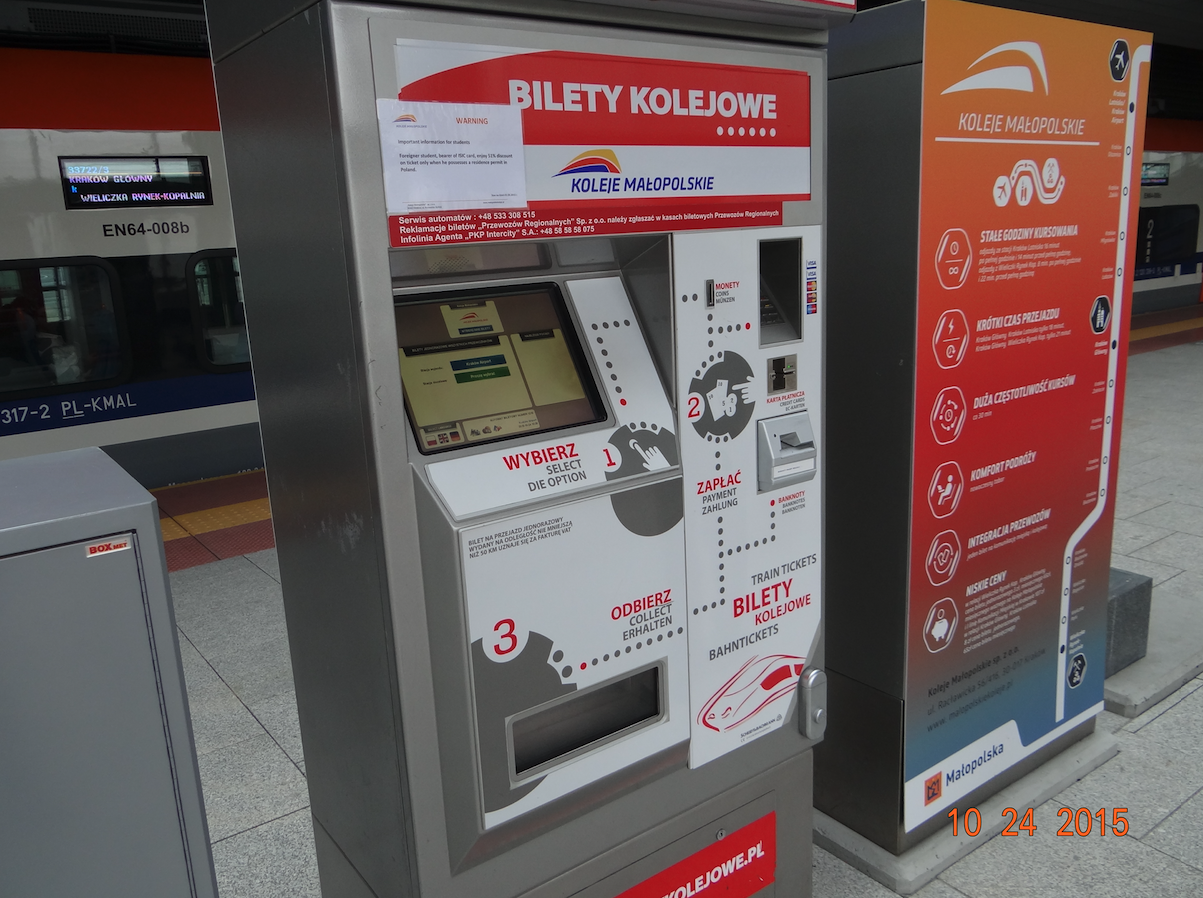

On September 1, 2014, railbuses to Balice were suspended. Preparatory work for the modernization of the railway line was already well advanced. The basic modernization consisted in replacing the single-track, non-electrified section with a double-track, electrified one. The railway number of this line is No. 118. New railway stops have been built on the route; (counting from the Airport) Kraków Airport – Kraków Olszanica – Kraków Zakliki – Kraków Młynówka. Kraków Młynówka is a stop near the Kraków Mydlniki station, but with more convenient access for local residents.
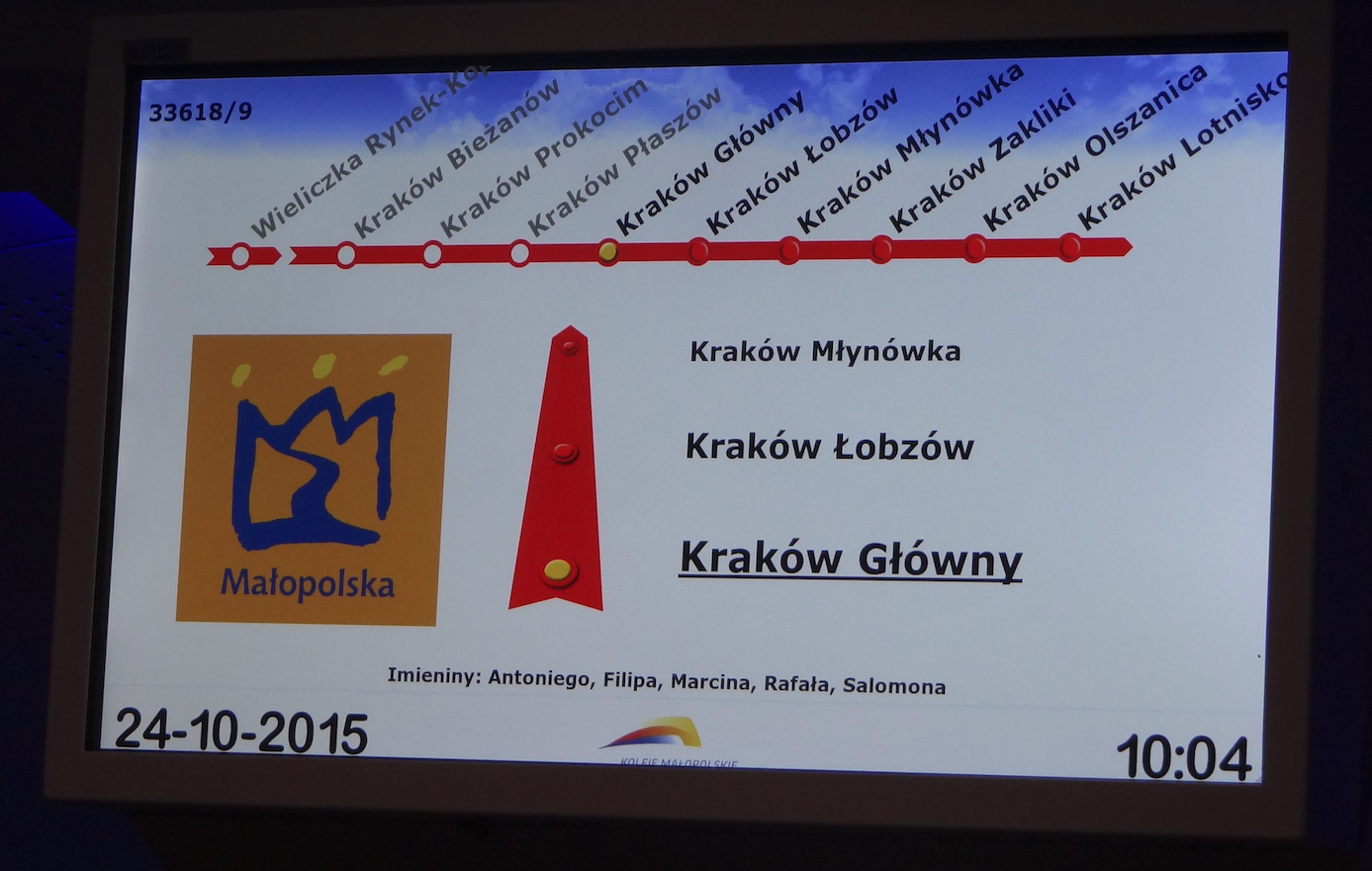
From September 28, 2015 (Monday), trains on the Wieliczka-Kraków Główny-Balice Airport route started running on new tracks. The journey time is 30 minutes, and on the section Kraków Główny - Balice Airport - 17 minutes. Frequency every 30 minutes. Trains depart from the airport 16 and 46 minutes after every full hour. There are 39 trips daily. There is a four-hour break at night. Overall, the travel time has not been shortened. It remains at the previous level, although please note that there are three new stops at the bus stops. Currently, this train is the best means of transport to the airport. And this in terms of comfort and punctuality.
A regular ticket on the Balice-Kraków Główny route costs PLN 8, one zloty more expensive than previously on railbuses. However, a ride from Olszanica, Zaklik and Młynówka to Kraków Główny costs only PLN 3. This is the result of the activities of the administration of individual districts. We will cover the entire route for PLN 18. All statutory ticket fare discounts apply.
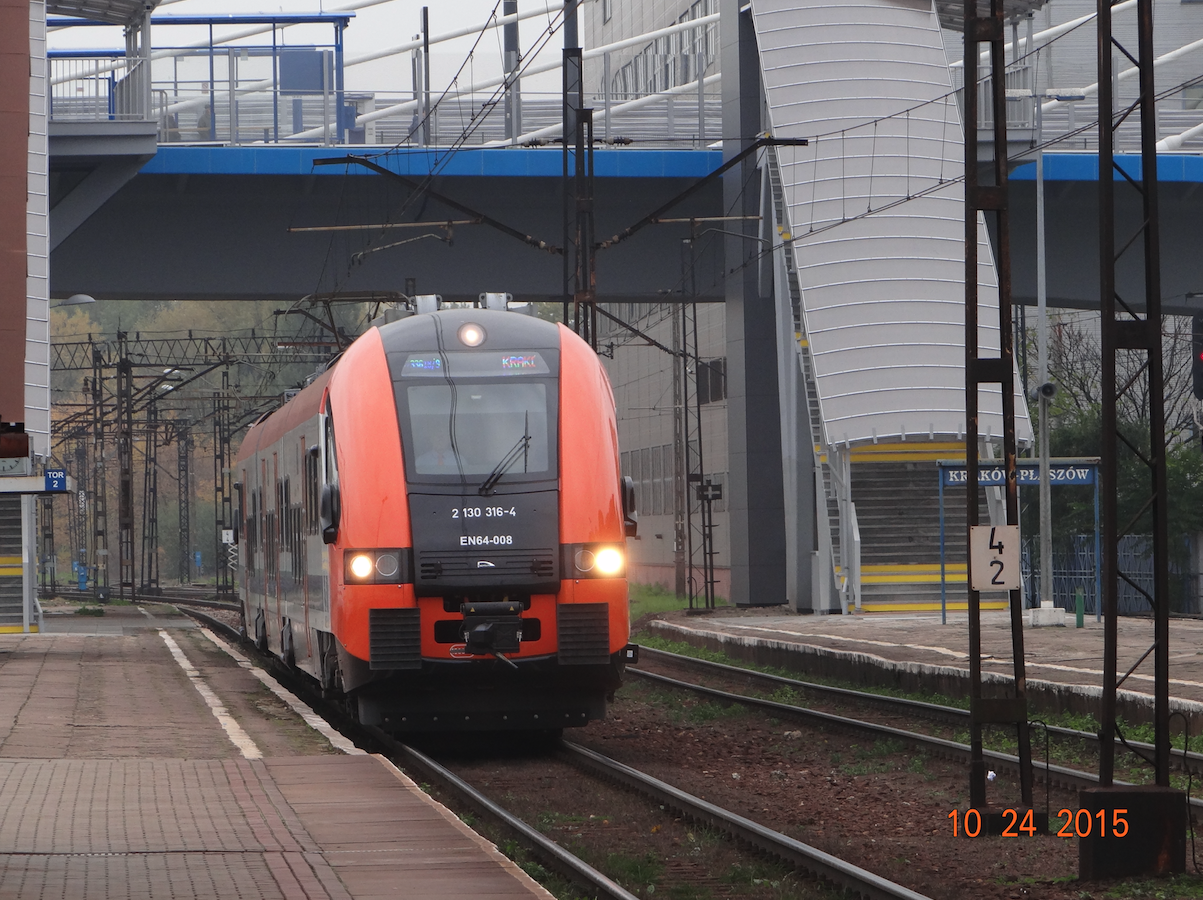
Photo description: EMU EN-64-008 composition no. 2130316-4 to the Kraków Airport station. Kraków Płaszów station.
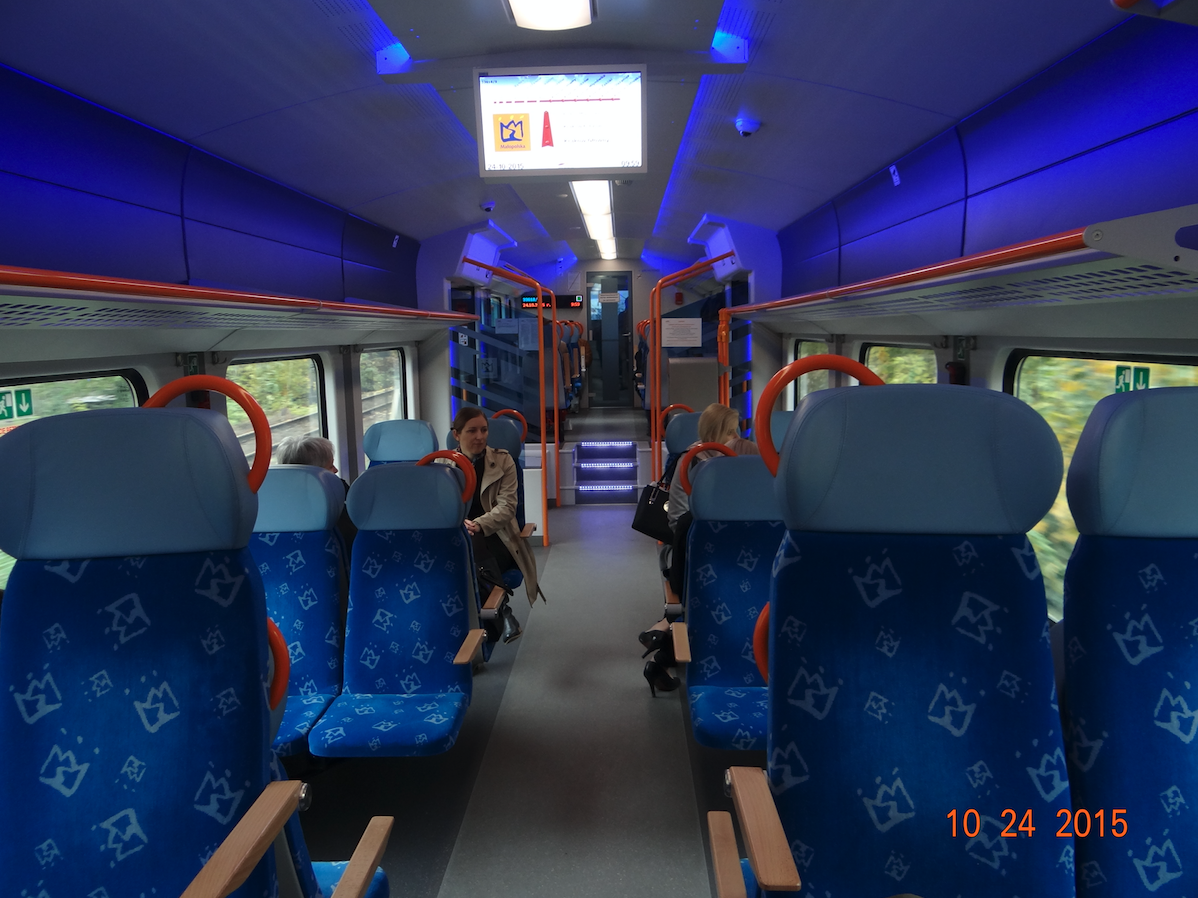
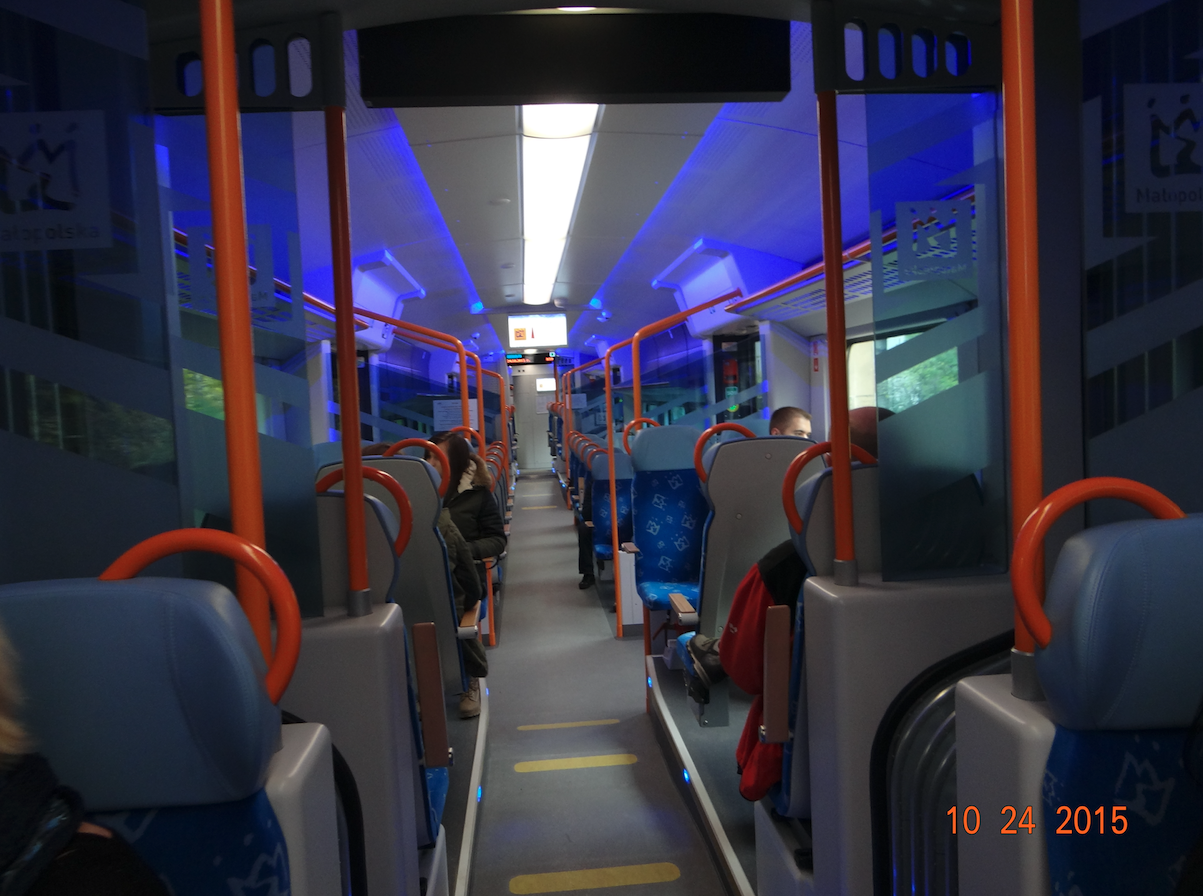

Balice Airport station.
The Balice Lotnisko station is properly named Kraków Lotnisko. On the southern side of the multi-storey car park, a railway station with one platform and two tracks was built. On the eastern side, the platform has a moving walkway taking passengers to a covered connector that leads straight to the terminal. On the western side, the platform is open and leads towards the street also leading to the terminal.
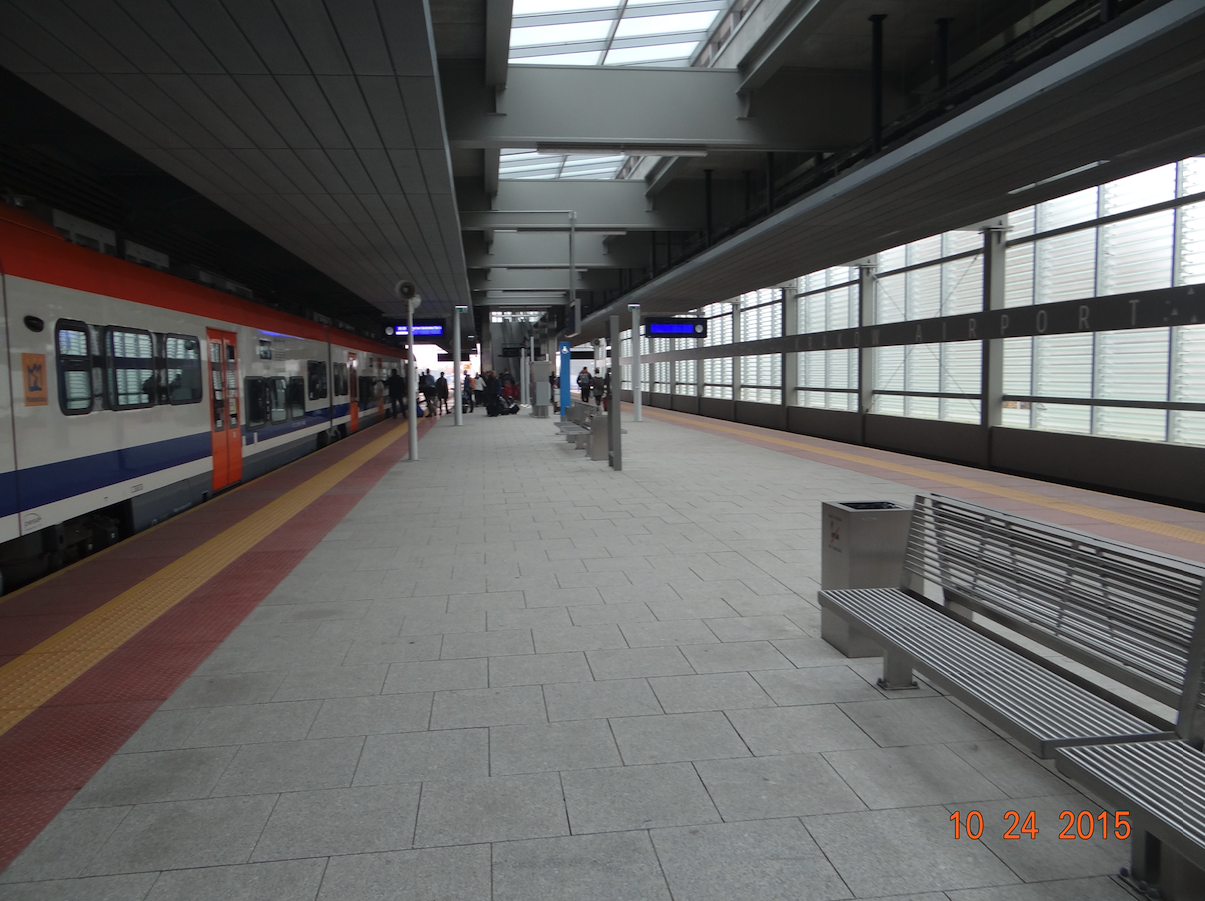
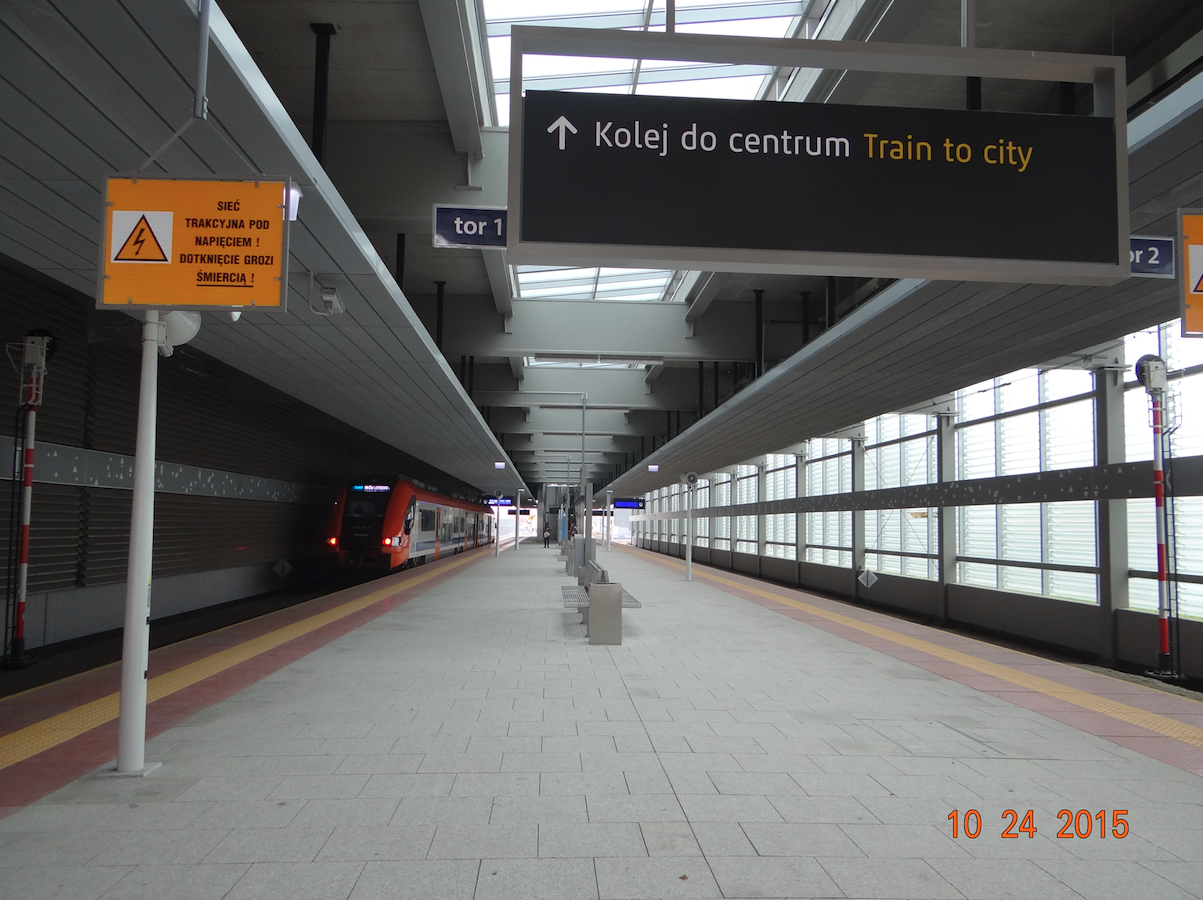
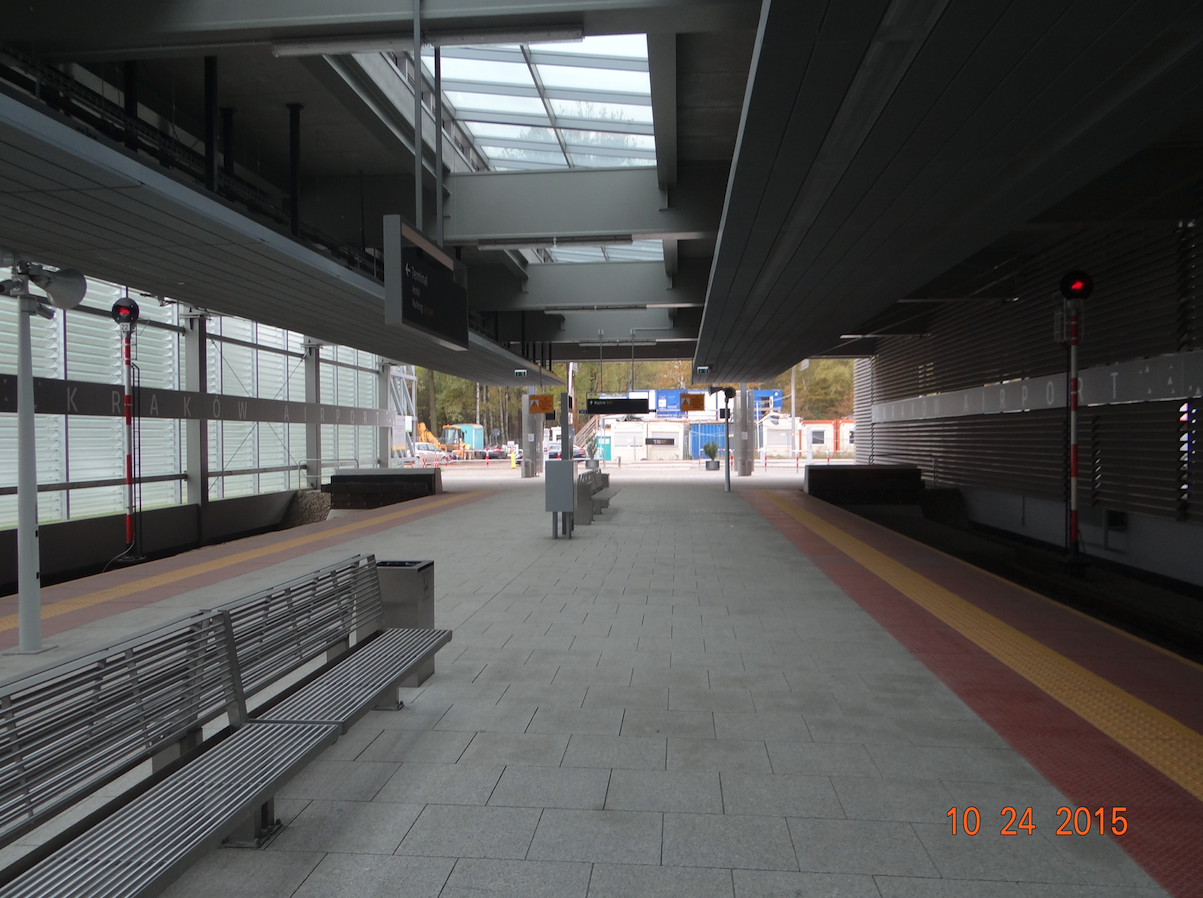
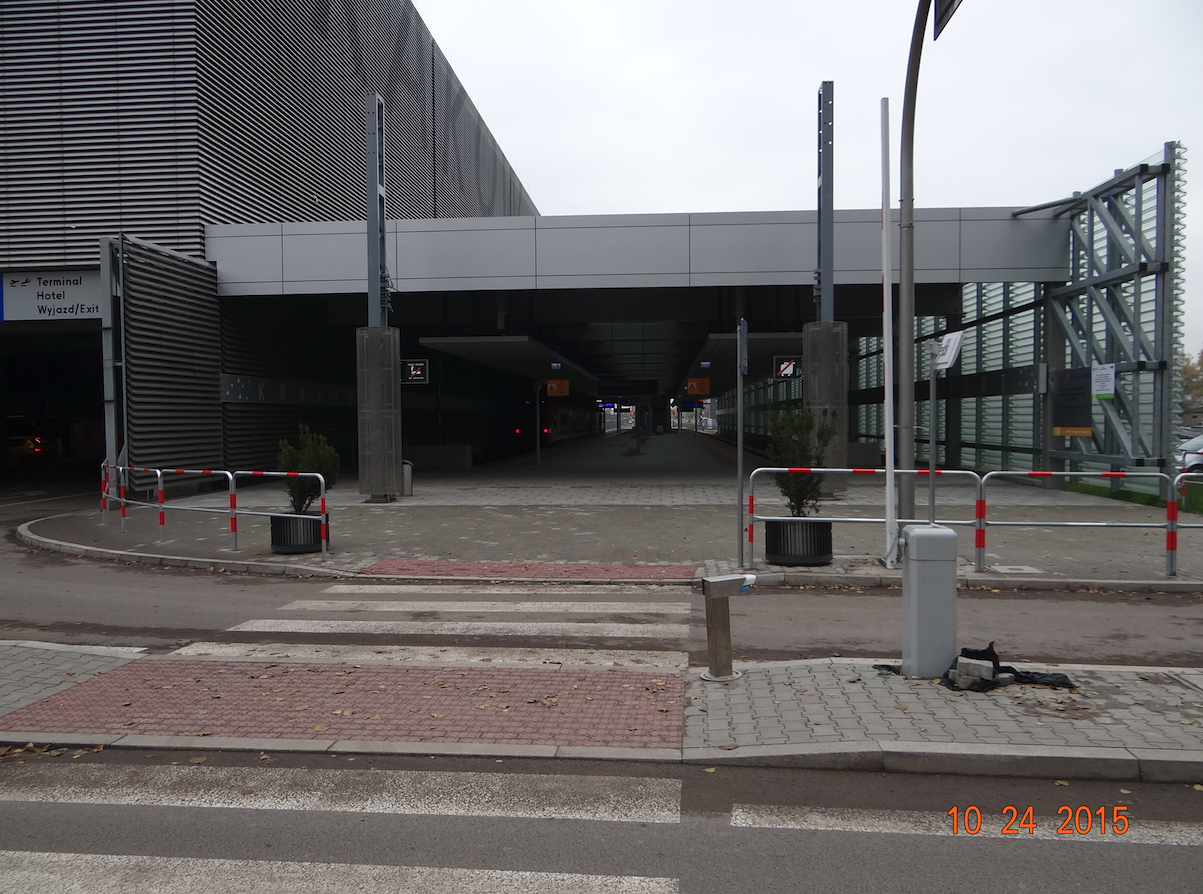
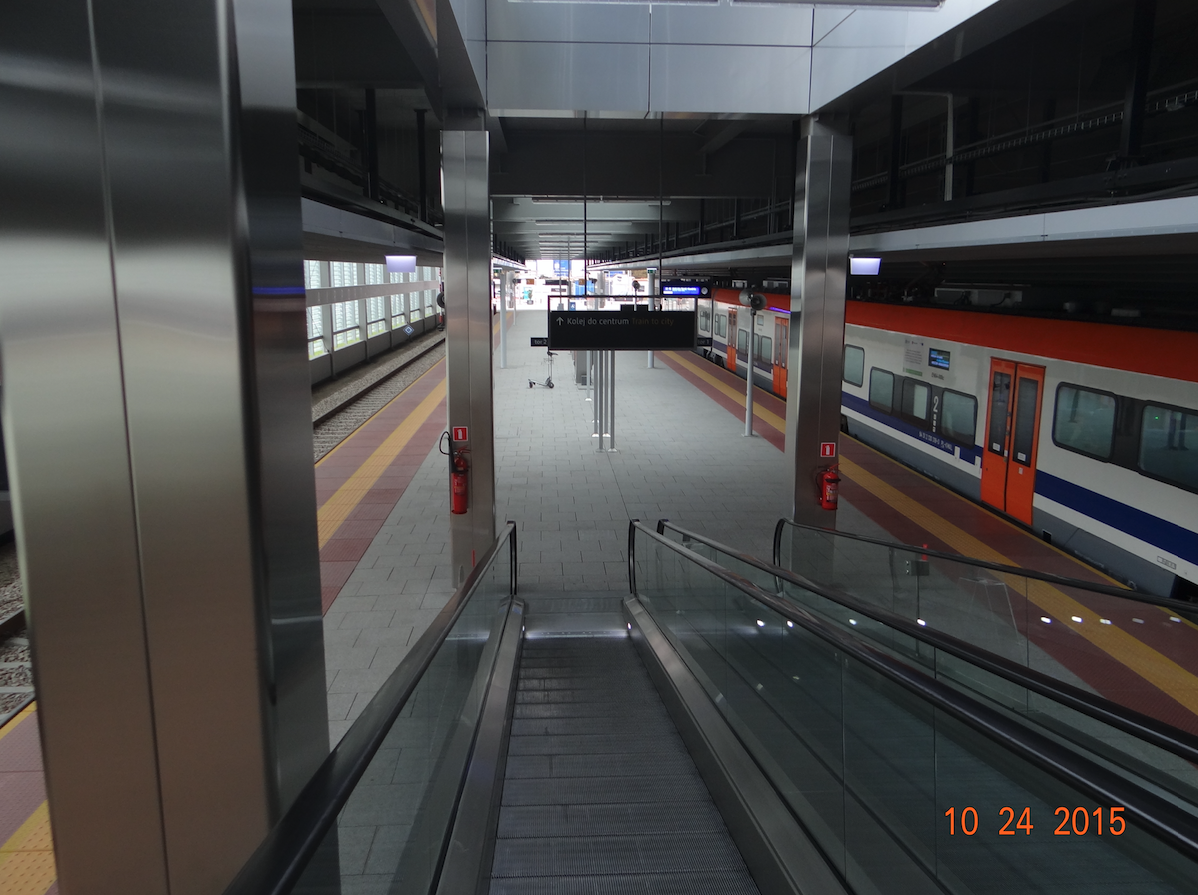
A moving walkway that leads to the terminal, via a pier.
A 500-meter new section of tracks was added to the station. The rest of the railway line consists of a modernized old track and its electrification. This includes new turnouts, bridges, railway crossings and new stops. The Kraków Łobzów stop was also modernized. The platforms are equipped with shelters, benches, lighting and a passenger information system. All platforms have been adapted to the needs of disabled people. The investment cost is approximately PLN 350 million.
Development of the Małopolskie Railways.
Koleje Małopolskie developed well in the following years. More connections were launched. The Kraków Główny - Kraków Airport line was gaining new passengers. Already in 2017, larger EMU trains of the following types: EN-78, EN-79 were sent to the Kraków Airport railway station. They have four and five wagons and are manufactured by the Polish company NEWAG. The EN-77 EMU train is a PESA train.
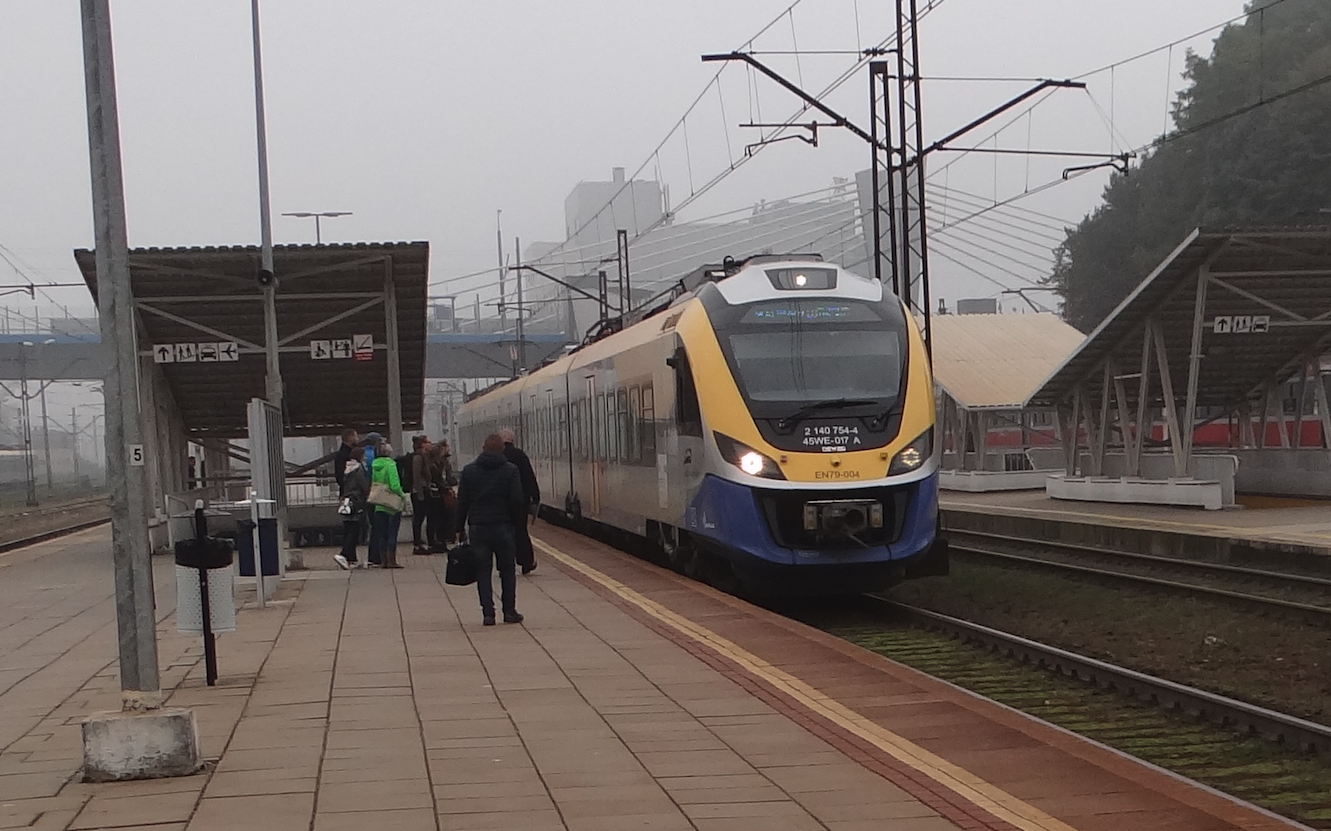
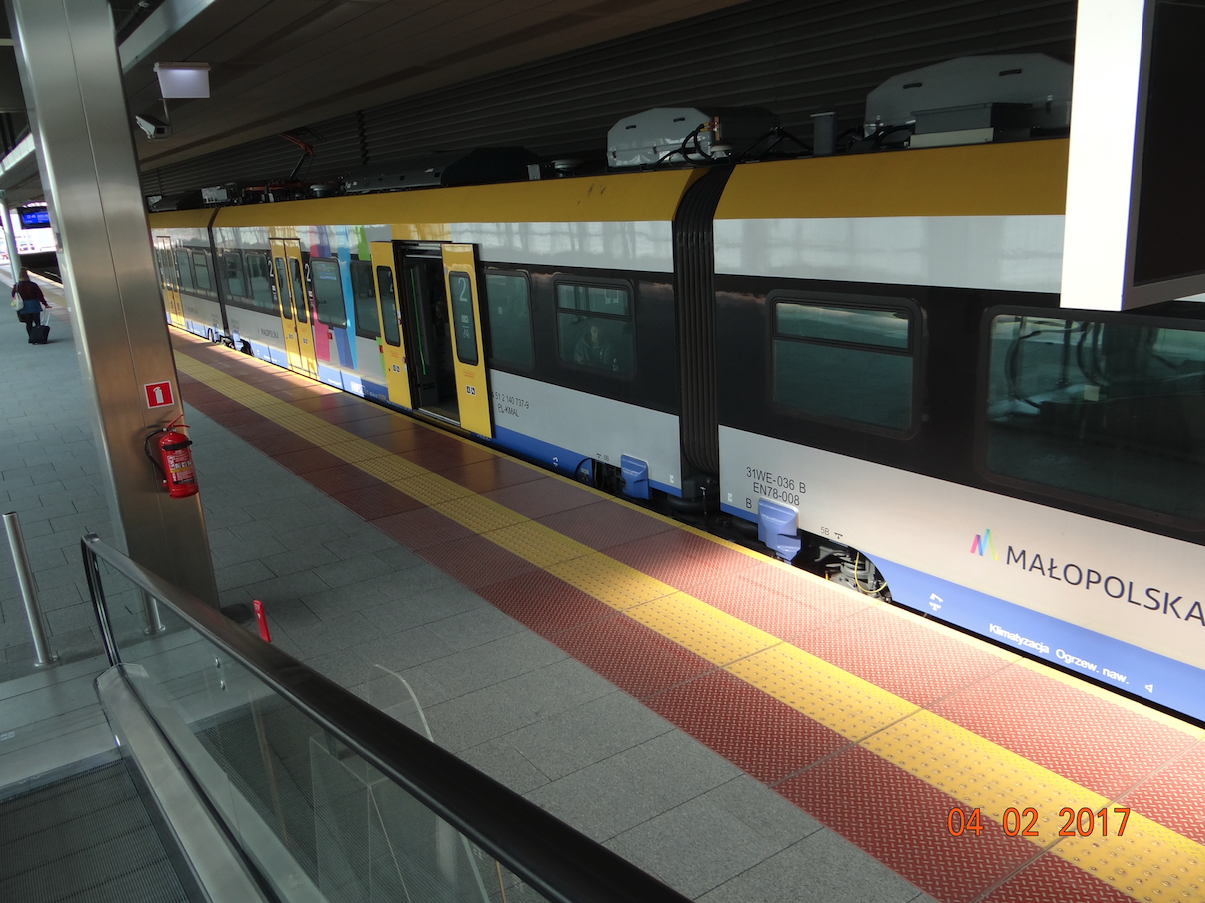
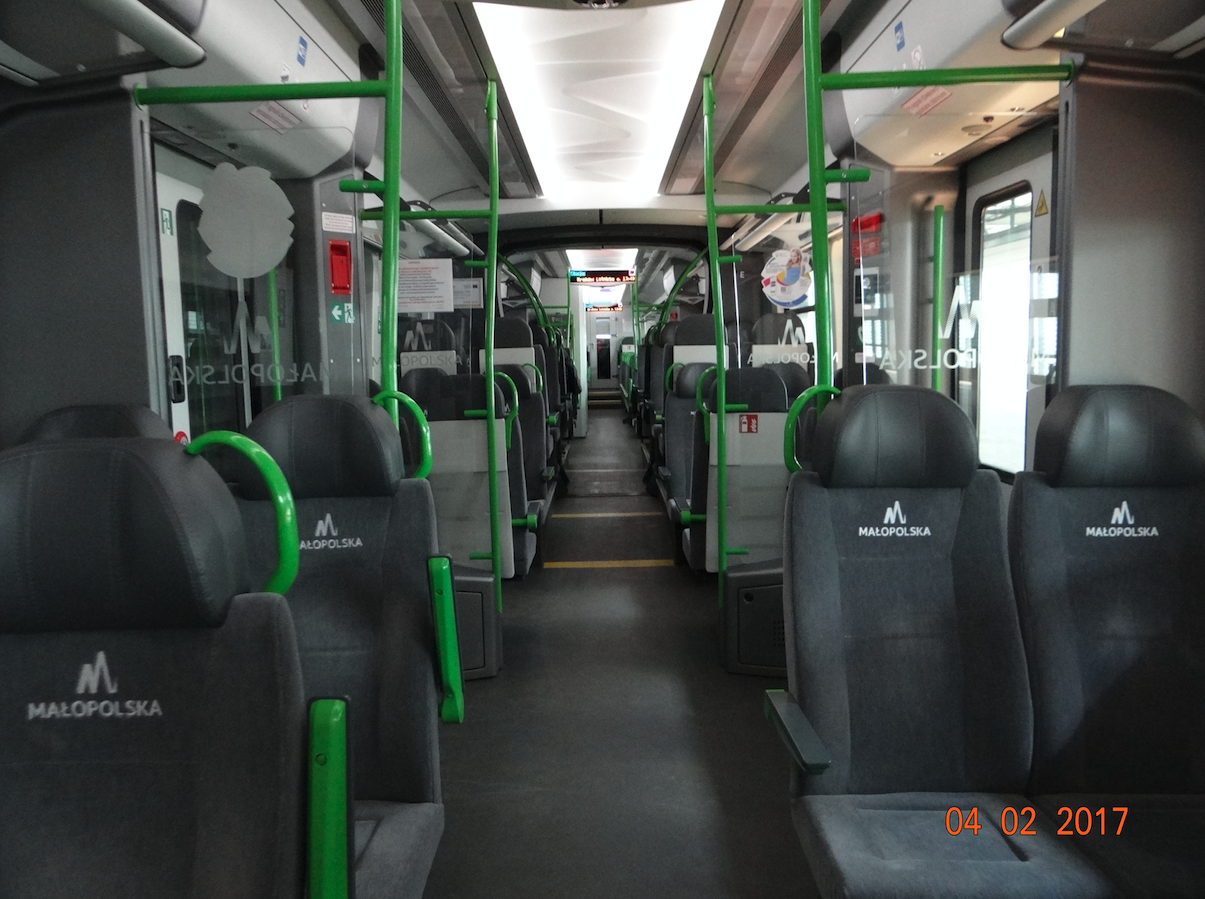
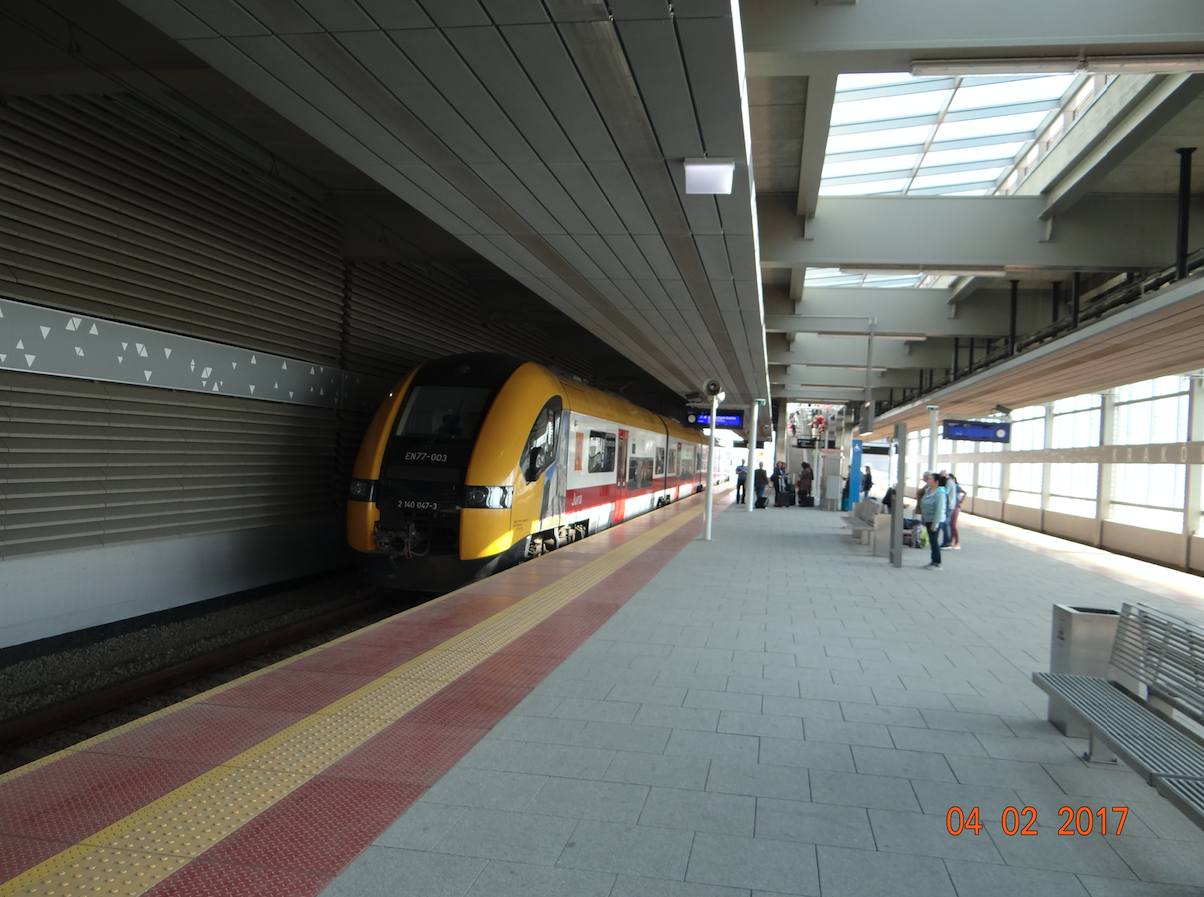
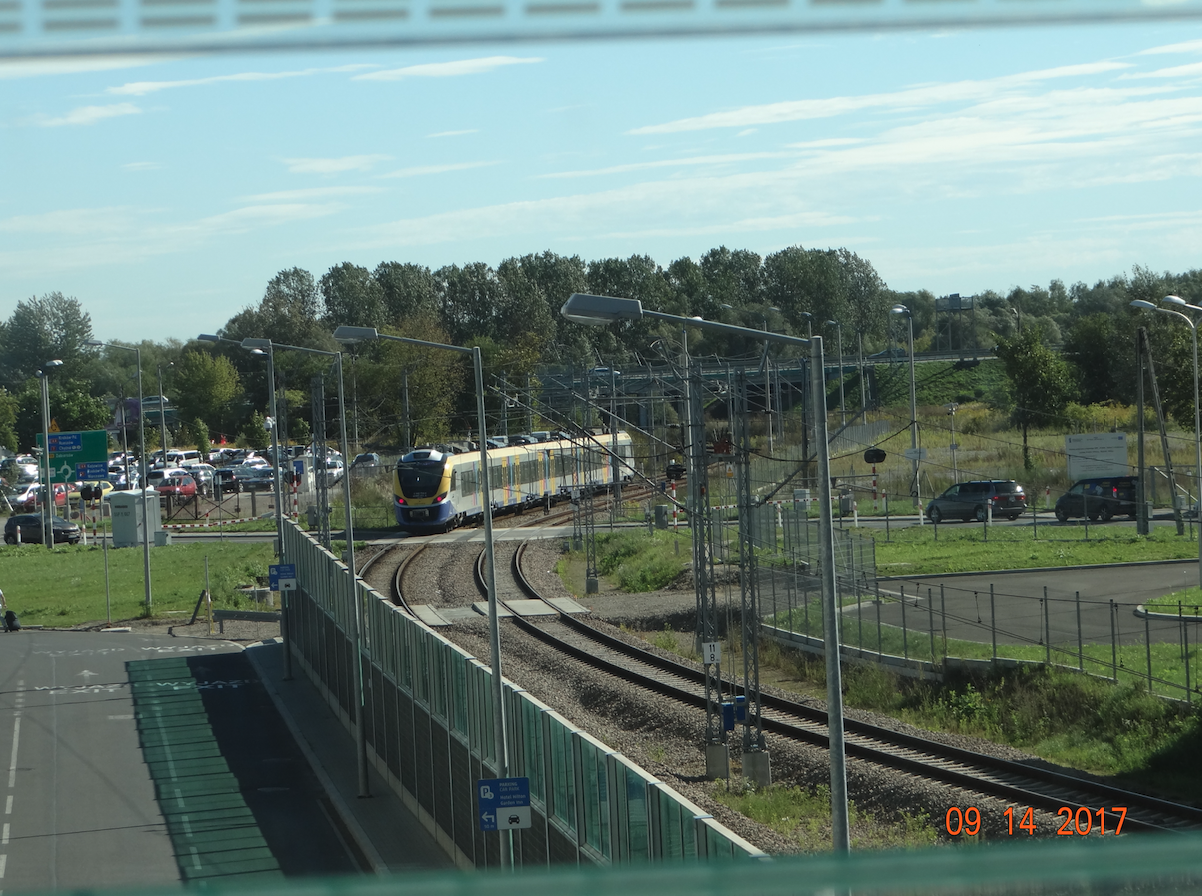
Written by Karol Placha Hetman
